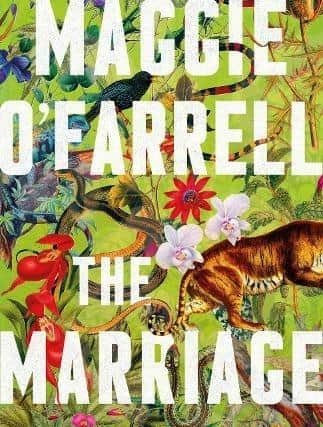Book review: The Marriage Portrait, by Maggie O'Farrell


When I was thinking about this review there were two words in my mind – tense and mood – and although the novel is both suspenseful and atmospheric, I was using the words in a strictly grammatical sense. On reflection perhaps “syntax” would have been even better. Nobody can manipulate and modulate time in the way Maggie O’Farrell does, and this has been a consistently overlooked feature of her oeuvre.
This book opens in 1561, in the present tense but a strange continuous version. The protagonist “is taking her seat” and her husband “is sitting down”. It has a hint of the future to it, as she knows, “he intends to kill her”. Later, it moves to another version: “He gave an order”, “heaved a deep and private sigh”. A tutor “will be sore of foot” and “will be hurrying in this”. One character “had had a plan”; and “could tell him everything”, “could describe for him”; later again “an ear pressed to the splintery wood of a passageway that ran beneath the Grand Duke’s private rooms might have heard”, “If the person to whom the listening ear belonged were to shift to the right”, “the eavesdropper in the passage might then have…” And there are more flourishes. In a wonderful cadenza, the principal character sleeps and there is a toll of “She sleeps as the wild boar bludgeon”, “She sleeps as the dawn birds unfold their wings”, “She sleeps as the pot boys are sent out to draw water from the well”. In a passage reminiscent of the flea’s voyage in Hamnet, a tiger makes its way to Florence. It might seem like a curlicue, but it becomes part of the novel’s structural integrity.
Advertisement
Hide AdThat this is a historical novel makes these shifts all the more necessary, because we know the story; or rather we might know the story. We might not know its retelling. The author’s note says the book was inspired by Robert Browning’s poem “My Last Duchess”. There’s a clever nod to this in the antagonist referring to “my first Duchess” before correcting himself to the word “beautiful”. There’s an even subtler hint in a ceiling painting of Neptune, given that Browning’s poem ends “Notice Neptune, though, / Taming a sea-horse, thought a rarity”. Given Browning’s poem is about a portrait it is appropriate that O’Farrell’s book features painting and portraits: looking at the Bronzino picture of her protagonist is fascinating, as the book affirms and denies its verisimilitude. She – Lucrezia di Cosimo de’ Medici d’Este – is vibrantly there and yet elusive. The stare in that portrait is not easily forgotten.


The history bit: Lucrezia was real, born in Florence around 1545, the fifth child of the Grand Duke. Her sister was betrothed to Alfonso, who would inherit his title as Duke of Ferrara. She died, and the contract (as it were) made Lucrezia the substitute. She married him, and leaves the historical record in 1561. It seems that the work done on Hamnet has served O’Farrell well. There are many switches and misconceptions, many carefully ambiguous words, many ekphrasic points, where a work of art described inside a work of art takes on great significance. But the ending – which I utterly, absolutely cannot reveal – is almost more Hitchcock than Shakespeare. I think that counts as praise.
There has been a trend for writers claiming to “give a voice” to the past. O’Farrell is braver and gives us the voicelessness of the past. Lucrezia says ‘I – ’ and “I…” (if anyone is reading carefully, note the difference between an em-dash and an ellipsis: I told you O’Farrell was clever with syntax). Lucrezia’s speech is always cowed and curtailed, yet she resists and is resilient. There is an elegiac note in watching the feisty child become a pawn that can be moved and if need be sacrificed.
The Renaissance suffuses this novel. It is carefully patterned with images: fire, water, honey, horses. There is a degree of relish in the detail, particularly around food and tapestry, but never with any sense of flaunting one’s research. All novels, I think, or at least all exceptional ones, keep their key hidden in full view. Here, it is about tapestry. When Lucrezia is attempting it, she is more concerned with the reverse: “She has always had a secret liking for this part of the embroidery, the ‘wrong’ side, congested with knots, striations of silk and twists of thread. How much more interesting it is, with its frank display of the labour needed to attain the perfection of the finished piece”. Later, in a disguise scene, Lucrezia has “access suddenly to the private hidden life of the castello, the wrong side of its embroidery, with all the knots and weave and secrets on display”. I’ll confess that I thought this was a set-up for a Polonius in Hamlet style demise, and am more than happy to say I was wrong-footed.
Maggie O’Farrell is a writer who I feel is never really given the adjectives she deserves: ingenious, inventive, humane, wry, truthful. This novel is better than her last novel: may the next be so too.
The Marriage Portrait, by Maggie O’Farrell, Tinder Press, £25. Maggie O’Farrell is appearing at the Edinburgh International Book Festival on 29 August